Muzharul Islam (Bengali: মাজহারুল ইসলাম; 25 December 1923 – 15 July 2012) was a Bangladeshi architect, urban planner, educator and activist. He is considered as the Grand Master of regional modernism in South Asia. Islam is the pioneer of modern architecture in Bangladesh and the father of Bengali modernism. Islam's style and influence dominated the architectural scene in the country during the 1960s and 70s, along with major US architects he brought to work in Dhaka.
As a teacher, architect, social and political activist, Islam set the course of architectural practice in the country not only through his own many varied works but also through being instrumental in inviting architects like Louis Kahn, Richard Neutra, Stanley Tigerman, Paul Rudolph, Robert Boughey and Konstantinos Doxiadis to work in Bangladesh.
Architect Muzharul Islam |
Early life:-
Muzharul Islam was born on 25 December 1923 in Murshidabad. He went to the United States in 1950 where he received his bachelor's degree in Architecture from University of Oregon. In 1956, he received a scholarship to study tropical architecture at the AA School of Architecture, London. In 1961, he completed his post-graduation under Paul Rudolph from Yale University. At Yale Stanley Tigerman was one of his classmates, and there he came in touch of Louis I Kahn. Muzharul Islam began his career by designing two buildings in the Shahbag area in 1955 – Dhaka University Library and College of Arts and Crafts. Between 1958 and 1964, Islam was the Senior Architect of the Government of East Pakistan.
Institute Fine Arts Dhaka University_Architect_Muzharul_Islam |
Career:-
His most important work was born when the Governor's Conference of Pakistan decided in 1959, under the leadership of President Ayub Khan, that Dhaka will be second capital of Pakistan. The government decided to build a capital complex at Sher-e-Bangla Nagar, Dhaka. Muzharul Islam was given to design Jatiyo Sangsad Bhaban (National Assembly Building of Bangladesh). But, he brought his teacher Louis Kahn into the project to do a significant work for future generation. Islam worked closely with him from 1965 to Kahn's death in 1973.
Along with Kahn, he also brought Paul Rudolph and Stanley Tigerman to work in Bangladesh, and three of them came to be known as the American Trio. Apart from the Trio, it was Islam's monumental style that dominated Bangladesh architecture from the 1950s onwards.
His major works include – Jahangirnagar University, Chittagong University, Central Public Library, Charukala Institute, the Azimpur Estate, Rangmati township, and a number of Polytechnic Institutes. Islam designed the master plan of Dhaka City. He also created the logo for the government of Bangladesh.
jahangirnagar university dhaka_architect_muzharul_islam |
BIO-DATA:-
ARCHITECT MUZHARUL ISLAM
FULL NAME : Muzharul Islam
DATE OF BIRTH : 25 December,1923
DIED : 15 July, 2012
FATHER'S NAME : Late Professor Omdatul Islam
MOTHER'S NAME : Late Mrs.Zakia Khatoon
PPRESENT ADDRESS
:Flat# 102,
Concord Regal Ridge,
Rd# 84, H# 16A,
Gulshan-2,
Dhaka-1212,
Bangladesh.
TELEPHONE : Home +880 2 9862211
Institute_Fine_Arts_Dhaka_University_Architect_Muzharul_Islam |
Institute_Fine_Arts_Dhaka_University_Architect_Muzharul_Islam |
Institute_Fine_Arts_Dhaka_University_Architect_Muzharul_Islam |
EDUCATIONAL:
1942 : Bachelor of Science, Calcutta, University, Calcutta.
1946 : Bachelor of Engineering, Calcutta University, Calcutta.
1952 : Bachelor of Architecture, Oregon University, USA .
1957 : Post Graduate3 Certificate in Tropical Architecture, A.A. School of
Architecture London, UK.
SCHOLARSHIPS:
1950-52 : Scholarship under Post-War Development
1956- 57 : British Council Scholarship for studying
Tropical Architecture at the A.A. School of Architecture,
London.
1961 : Rockefeller Fellowship for studying the state of Contemporary
Architecture in Europe.
PROFESSIONAL:
1958-64 : Senior Architect of the former Government of East Pakistan.
1953-54 : Visiting Professor, Ahsanullah College of Engineering and
Technology (at present it is Bangladesh University of Science and Technology), Dhaka.
1962-64 : Member, Academic Council, University of Engineering and
Technology, Dhaka.
Joypurhat_Limestone_Housing_Architect_Muzharul_Islam |
mazharul_islam_jaipur_hat_industrial_housing_auditorium |
mazharul_islam_national_archieve |
SOME OF THE MOST SIGNIFICANT WORKS:
1953-55 : The College of Arts and Crafts, Dhaka (at present it is the ‘Institute of Fine Arts’ of the University of Dhaka), Bangladesh
1953-54 : Public Library (at present Dhaka University Library), Dhaka,
Bangladesh.
1963-64 : Plan for Khilgaon Railway Rehabilitation Zone, Dhaka,
Bangladesh.
1963-64 : Plan for new Rangamati Town, Chittagong Hill Tracts,
Bangladesh.
1962 : Housing of Fourth Class Employees, Azimpur Estate, Dhaka,
Bangladesh.
1964 : Architect's Residence, Dhaka.
1963-65 : BCSIR Laboratory Buildings , Dhaka .
1969: National Institute of Public Administration Building, Dhaka
1965-71 : 14 storied Head Quarters Building, Agricultural Development
Corporation, Motijheel, Dhaka, Bangladesh.
1965-71 : 27 storied EFU Building (Jiban Bima Bhaban) Project,
Motijheel, Dhaka , Bangladesh .
1966-78 : Five polytechnics at Rangpur, Bogra, Pabna, Sylhet and
Barishal (in collaboration with Arch. Stanley Tigerman).
1965-71 : Road Research Laboratories, Dhaka .
1968-71 : Chittagong University Master Plan and designs of Students'
Hostel, Humanities Building , Science Building, Administrative
Building , Readers' Quarters, VC's Quarters, Professors' Quarters.
1967-70 : Jahangirnagar University Master Plan and designs of
students' Hostel, Readers Quarters, Fourth Class Employees.
1968-71 : Housing for Rooppur Atomic Energy Complex.
1978 : Joypurhat Limestone and cement Project
Master Plan Housing for 200 officers Housing for 1700
employees Clinic and Hospital Bazaar and Mosque
1978-79 : National Library, Sher-e Bangla Nagar, Dhaka, Bangladesh.
1980-84 : National Archives, Sher-e Bangla Nagar, Dhaka,
Bangladesh.
1987 : Office Building for the World Bank, Dhaka, Bangladesh.
1995 : 20 storied “Garden City” Project, Dhaka.
EDUCATIONAL AND OTHER ACTIVITIES:
1953-60 : Active role for setting up a college of Architecture.
1962 up to date: Jury Member, for many final year projects, present
BUET.
From 1980: Joined Seminars organized by the Aga Khan Awards: Jakarta,
Jordan, Cairo, Morocco and Dhaka.
From 1983 : One of the main organizer for setting up to date “CHETANA”
–an architectural study group.
1996 : As President of “CHETANA” organized documentation of the
remains of the ancient buildings in Bangladesh, with the help of the other
members of the Executive Committee.
1998 : Publication of the book “Pundranagar to Sher-e-Bangla Nagar” by
CHETANA.
1998 : Exhibition of drawings and photographs of the buildings surveyed
by CHETANA.
1998 : Exhibition of Islam's Work in New York (Architectural League of
New York), Philadelphia and Chicago.
1972 up to date: Working actively for the laws and control of
Architecture as a profession in Bangladesh.
1972 up to date: Working as activist for laws for the total physical
Planning of the country.
Architect_Muzharul_Islam-Fine_arts_Institute |
national_archieve_Architect_Muzharul_Islam |
National_Library_National_Archives_Dhaka_Bangladesh_architect_muzharul_islam |
HONORS AND AWARDS:
1970 : Chairman, Advisory Panel on Building Construction. Housing
Architecture and Physical Planning Fourth Five Year Plan, Pakistan.
1968-69: President, Institute of Architects Pakistan.
1972 - up to date: Member, Institute of Architects, Bangladesh.
1970: Member, Jury Board for the Selection of the Best Design of the
Grand Mosque, Islamabad, Pakistan.
1972-75: President, Institute of Architects Bangladesh.
1976-80: President, Institute of Architects Bangladesh.
1980: Member, Master Jury, First Aga Khan Award, Geneva.
1980 : Member, Jury Board for the Selection of the Best Design of
the Monument at Savar.
1981 : Member, Jury Board for the selection of the best design for
the H.Q. Building of the lslamic Development Bank, Jeddah.
1981 : Member. International Jury Board for the selection of the
best design for the Ministry of Foreign Affairs, Riyadh, Saudi Arabia.
1989: Citation by the indian institute of Architects ,west Bengal Chapter,
as the outstanding Architect from the south Asian countries for his
devoted architectural works and dedication to generate Architectural
awareness".
1993: Awarded Gold Medal to a member Architect for the first time by the
Institute of Architects, Bangladesh
1997 : Member, Jury Board for the selection of the best design for
Victory Monument at Suhrawardi Uddyan, Dhaka.
1999 : Member, Board of Governors, National Museum, Dhaka.
1999 – Received JK cement architect’s award.
-Awarded the Honorable Fellowship, American Institute of
Architects at the National convention of the Institute at Dallas,
Texas, USA .
- Awarded the independence Day Award, Bangladesh.
- Awarded the Grand Master Award at the South Asian
Architecture Award Ceremony at Jaipur, India.
2003 : His 80th birthday ceremony was publicly celebrated at the
premises of his first project 'Fine Arts Institute Dhaka', organized
by the Institute of Architects, Bangladesh.
2005 : A documentary film 'The Architect' on Architect Muzharul
Islam's life and works was released on the occasion of his 82nd
birthday. The film was directed by Architect Enamul Karim Nirjhar.
PUBLICATIONS:
-- Encyclopedia Britannica Volume 22, 15th Editions 1986, page- 99.
-- Architectural Review, London, April 1960, Page-155.
-- Environments, Volume 19, Number 2, 1988, University of Waterloo,
Ontario, Canada, Page-55 to 60.
-- Architecture + Design, New Delhi, India, May-June, 1988, page- 26 to 32
& 36.
-- “Tri-Matra” yearly publication of the students of the Faculty of
Architecture, Bangladesh University of Engineering and Technology,
page-7 to 14.
-- Daily “Sangbad”, Dhaka, 23 December, 1993, Page-12.
-- Daily “Bhorer Kagoj”, Dhaka, 24 December, 1993, Page-9.
-- Daily “Banglar Bani”, Dhaka, 7 March, 1994, Page-1.
-- Daily “Bhorer Kagoj”, Dhaka, 7 March, 1994, Page-12.
-- Weekly “Holiday”, Dhaka, 31 December, 1993, Page-6.
-- Daily “Star”, Dhaka, August, 2000.
-- Lecturer, re: Exhibition of Works of Four Architects of the Indian
Sub-Continent; New York, Philadelphia, 1997.
-- Lecturer, re: Exhibition of Architecture in Bangladesh, “Pundranagar” to
Sher-e-Bangla Nagar (350 B.C. to present time), 1997.
-- An Architecture of Independence : The Making of Modern South Asia,
1997, University of Pennsylvania.
-- The India International Centre Quarter: Monsoon 1997, Volume- 24,
Number 2-3.
-- Architect Muzharul Islam and Chicago Architect Stanly Tigerman did the
elaborate study on typology and tectonics, ecology, climate and
materials. Their study resulted in a major report, which was featured in
the September 1968 issue of “Architectural Record".
-- An article on works and phylosophies of Muzharul Islam published in the online global architects forum ArchSociety.com on 01 February 2007.
-- An article on Muzharul Islam was published in renowned magazine Docomomo in their Journal-37 (September 2009) entitled “The Voice of the Modern Bengali: Architect Muzharul Islam”. It was written by Nasheet Rumy and Mohammed Andalib Saadullah.
Biological_Science_University_Chittagong_Architect_Muzharul_Islam |
Chittagong_University_Central_Monument_architec_muzharul_islam |
Chittagong_University_Library_Architect_Muzharul_Islam |
Independence_Memorial_Mural_University_Chittagong_Architect_Muzharul_Islam |
Intellectuals_Memorial_University_of_Chittagong_Architect_Muzharul_Islam |
Quotes:-
"Symbol for what? Symbol of what? Symbol of whom?... The hesitation in my mind has deep roots. I feel that human society has been kept in darkness for thousands of years by the use of symbols. I revolt against it. By raising the issue of symbols, in the name of symbols, my perspective has been kept limited."
"Cities should provide the environment for civilized life within the context of our own culture... The city can develop only as a part of the physical environment of the country- with the ultimate aim of abolishing all differences between the city and the rural areas. The traditional relationship with nature (still existing to a certain extent in the village of Bangladesh) should be continued in the cities."
"The artistic qualities are essence of architecture. The practical aspects of architecture are measurable – such as, the practical requirements, climatic judgements, the advantages and limitations of the site etc. – but the humanistic aspects are not measurable. This depends on the talent, sensitivity and creativity of the architect. Only some bookish knowledge is not a sufficient tool in this regard. One has to be creative. One has to love his own land, its people and its culture and think profoundly about these. The love of one’s own land is the eternal source of creative power, which in turn, makes a proper architect."
"You have to be a world man and a Bengali. It's impossible otherwise... When I mention standing on one's own soil... it is to find oneself, but not to find oneself and become stagnant. What I am seeking is to stand on one's own feet and then to proceed forward. If for that reason I have to take two steps backward to go one step forward. I have no problem with that. I think that there is no other way of moving forward."

architect_muzharul_islam_jahangir_nagar_university_student_hostel_site_plan
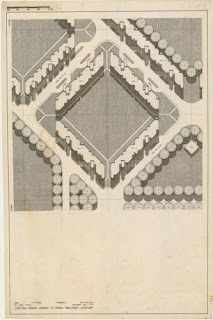
Architect_Muzharul_Islam_joypurhat_flat_type-e_f_roof_plan
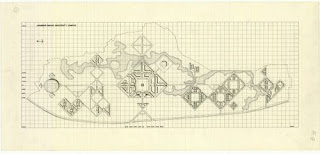
muzharul_islam_jahangir_nagar_university_campus

muzharul_islam_jahangir_nagar_university_science_building

muzharul_islam_jahangir_nagar_university_site_plan

plan_elevation_national_library_architect_muzharul_islam
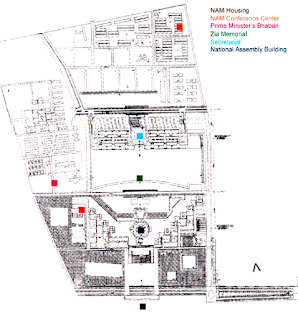
Site_Plan_Sherebanglanagar_Architect_Muzharul_Islam

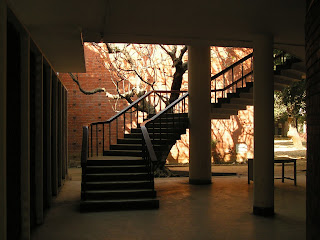
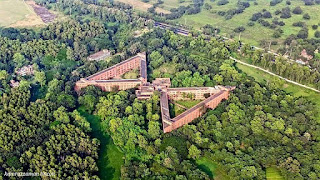
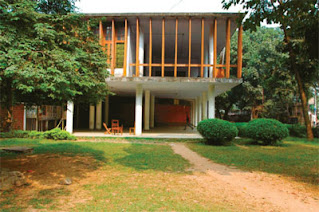
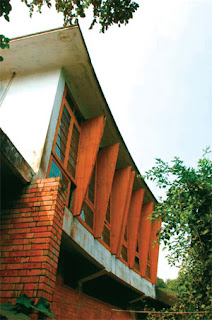

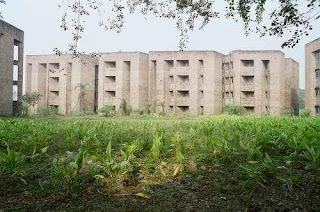
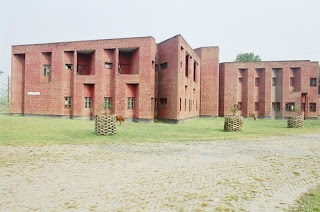
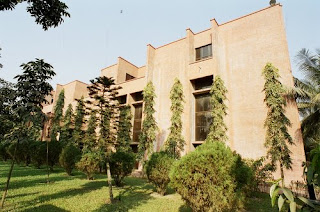
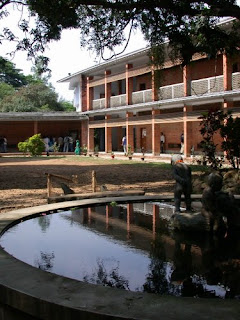

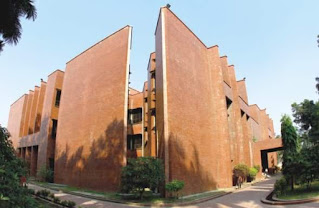
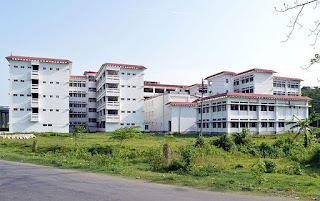

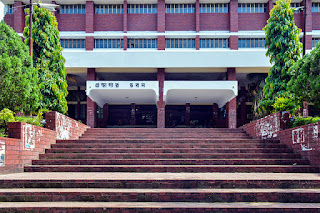
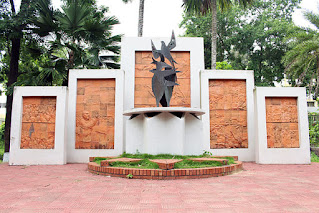
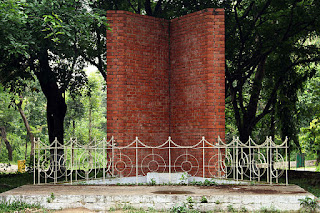
Comments
Post a Comment
If you have any doubts, Please let me know